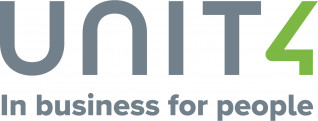what is UCaaS?
Unified Communications as a Service (UCaaS) is a network of cloud-based telephone system that controls the flow of calls coming in and out of your organization. We replace your on-premises PBXs, as well as your SIP, PRIs, and POTS lines. UCaaS enables you to use a variety of hosted programs and services (including instant messaging, video conferencing, file sharing, and email) over the Internet from any location and at any time. In addition, UCaaS provides security, allows flexibility, and integrates well with your other software applications including MS Teams. UCaaS systems are updated frequently by the provider ensuring that your communication methods will always be up-to-date in our ever-evolving world.
Why UCaaS is critical for all customer-guided corporations?
GUARANTEES YOUR BUSINESS CONINUITY & SECURITY
Experteers can easily answer this for all municipalities and companies who care about their customers.
First of all we have to emphasize about the importance of continuity in all circumstances, UCaaS provides the best option to avoid your business any hiccups along the road because of any reasons. UCaaS is available on any communication device, laptop, or PC anywhere at anytime to be able to efficiently communicate with your customers.
Security is another crucial requirement for all connected networks, voice calls, video conferencing, and instant messaging are parts of all departments communications to enable them to work properly and deliver services. Experteers, as part of security provider, enable first layer of security by having all our servers in Canada, maintaining 100% availability by having four communication centers in main four cities in Canada in Montreal, Calgary, Vancouver, and Toronto, and to maintain the second layer of security by having all SOC certified centers.
INCORPORATES THE LATEST FEATURES
When you have UCaaS, you’ll be able to use all the latest functions and features without any additional cost. You’ll also have the assurance that your information is kept safe and secure in a reliable data center. Having the ability to keep your communications up-to-date allows you to remain competitive and helps to increase your overall performance.
OFFERS FLEXIBILITY AND SCALABILITY
UCaaS allows organizations to add and remove users (for example, temporary employees) without any significant infrastructure changes or capital investments. UCaaS also provides seamless work experiences for your employees since they are cloud-based and accessible from any location – great for those working remotely.
PROMOTES PRODUCTIVITY
By using a UCaaS system, your productivity increases. All of your employees have unified communications support that is sharable amongst all departments, and UCaaS integrates well with your other software applications (like CRM). UCaaS keeps communication lines open and provides ways for your employees to log into various devices to access their information (such as voicemails).
LAST BUT NOT LEAST
SAVES YOU MONEY
When switching to UCaaS, there are minimal upfront hardware costs – you only need phones. You will also have the ability to choose the services you need (and not waste money on the ones you do not). UCaaS allows you to concentrate on growing your business by decreasing your dependence on capital investments.

We at EXPERTEERS are helping municipalities, utility companies, and medical centers increase employee productivity by adding a state of the art Unified Communications Solution, enhancing collaboration and increasing employee efficiency.
- Enable your team to work remotely (hybrid)
- Train employees more efficiently with sentiment analysis
- Monitor key performance metrics with automated reports
- Boost company performance through detailed analytics & collaboration
- .. and more
Let us help you improve your client experience, call us at EXPERTEERS to learn how we can help enable your business for success in 2022.
Experteers is a system integrator SI and managed service provider MSP for the following services:
– SASE / SD-WAN: to secure all ur networking between all branches.
– NGFW: Next Generation Fire Wall centralized to keep all networks secured in almost real-time updated system.
– NMS: Network Managed System to keep your visibility on all network elements and servers to improve your systems availability.
– Cyber-Security on all endpoints and servers
EXPERTEERS CORPORATION



 ZoomProspector is available to answer questions 24/7 from anyone who comes to your website, whether they’re a potential investor, site selector or local entrepreneur. The industry’s leading GIS web tool for economic development can always be relied upon to offer accurate, up-to-date information in clear, visually compelling ways. And while it can’t crack a clever joke in meetings, celebrate birthdays or join co-workers for drinks after work, it will also never take a vacation, steal your lunch from the fridge or leave the coffee pot empty.
ZoomProspector is available to answer questions 24/7 from anyone who comes to your website, whether they’re a potential investor, site selector or local entrepreneur. The industry’s leading GIS web tool for economic development can always be relied upon to offer accurate, up-to-date information in clear, visually compelling ways. And while it can’t crack a clever joke in meetings, celebrate birthdays or join co-workers for drinks after work, it will also never take a vacation, steal your lunch from the fridge or leave the coffee pot empty.





